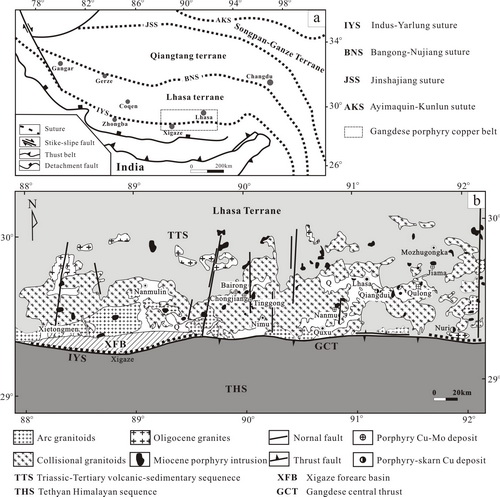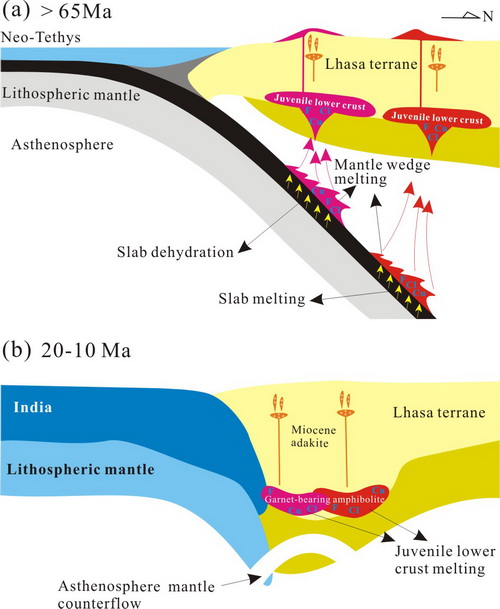Postdoctor LI Jinxiang and his teacher QIN Kezhang present new zircon U–Pb ages, whole-rock chemical, and Sr–Nd and zircon Hf isotopic data for Miocene ore-bearing adakitic porphyries from Tinggong, Chongjiang porphyry Cu–Mo deposits and Qaingdui porphyry-skarn Cu–Mo deposit in the Gangdese porphyry copper belt, southern Tibet.
Combined with previous geochemical data, they propose that the ore-bearing adakitic porphyries are likely derived from the melting of thickened juvenile arcmafic lower crust which formed during the Neotethyan ocean subduction. The arc lower crust was likely derived from the melting of the mantle wedge that was metasomatized by slab-derived fluid or melt.. Like arc magma , the arc lower crust should be enriched in F, Cl,H2O, and Cu and of high oxidation state, contributing to the formation of porphyry Cu–Mo deposits in southern Tibet.

Fig. 1. Sketch tectonic and location map (a), and generalized geologic map (b) of the Gangdese porphyry copper belt in the southern Tibet. (Image by LI)

Fig. 2. The genetic model of porphyry mineralization in Gangdese porphyry ore-bearing. (Image by LI)
Li et al. Post-collisional ore-bearing adakitic porphyries from Gangdese porphyry copperbelt, southern Tibet: Melting of thickened juvenile arc lower crust. Lithos. 2011, 126: 265-277 (Download Here)